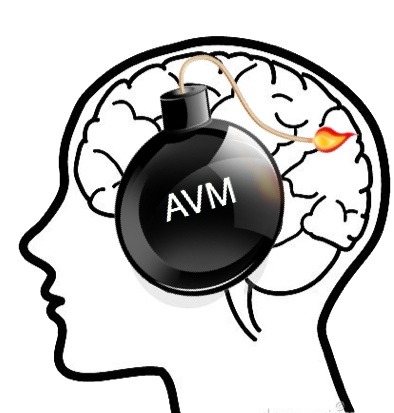Arteriovenous Malformations
Recall your medical school application? Do you remember what you wrote about in your personal statement? I would be willing to bet that a good majority of you wrote about wanting to “make a difference.” Those of us that spend time in the ED certainly place ourselves in the position to be able to make that difference during acute life-altering moments! The child who was healthy at 7:59am and then seizing at 8:00am comes to mind. While an AVM is rare, it has a powerful ability to acutely alter the course of a life and those lives around it.
Arteriovenous Malformations
- Tangle of blood vessels that bypass the normal brain tissue and diverts blood directly to the venous system.
- The blood vessels are weaker than normal and can become more dilated, and thus even more fragile.
- They are uncommon, but true incidence is not fully known.
- Estimated annual incidence of symptomatic AVMs = 1.1 per 100,000
- Autopsy data suggests overall frequency of ~4.3% of population
- Often considered to be congenital; however, some have shown that kids that had them removed later developed new AVMs, so obviously there are other factors involved.
Pediatric Specific Considerations
Presentations
- Children with AVMs are more likely to present with hemorrhage than adults.
- 80-85% will initially present with hemorrhage.
- Also carries a mortality rate of 25%
- Very young children (< 2yrs), may actually present with High-Output Heart Failure due to the arteriovenous shunting.
- Seizures is another common presentation.
- Headache and isolated neurologic deficit also have been seen.
- Some will be incidentally picked up on imaging for other reason.
Risk of Hemorrhage
- There are several models that are used to attempt to help predict the natural course of the AVM… but they aren’t perfect.
- The Lifetime risk of hemorrage can be estimated with the formula:
- Lifetime Risk % = 105 – (age of patient in years)
- Obviously, young patients are more likely to develop a hemorrhage.
- If the AVM has already bleed, there is a higher risk of it bleeding again during the first year (up to ~18%).
Neurosurgical Options
- Resection
- Endovascular embolization
- Radiofrequency ablation (radiosurgery)
- Multimodality
- All are useful. Generally, pediatric patients do warrant a more aggressive strategy given higher incidence of hemorrhage.
Simple Actions Matter
If you have determined that your patient has a bleed and has increasing ICPs… do some simple things that can make a difference:
- Elevate Head of Bed to 30 degrees
- Sedate… perhaps intubate (consider your drugs carefully and have excellent technique — First Pass Success is imperative as always!)
- Control pain
References
Ogilvy CS, Stieg PE, Awad I, Brown RD Jr, Kondziolka D, Rosenwasser R, Young WL, Hademenos G; Special Writing Group of the Stroke Council, American Stroke Association. AHA Scientific Statement: Recommendations for the management of intracranial arteriovenous malformations: a statement for healthcare professionals from a special writing group of the Stroke Council, American Stroke Association. Stroke. 2001 Jun;32(6):1458-71. PMID: 11387517. [PubMed] [Read by QxMD]



[…] We have previously covered some important conditions to consider when evaluating headache (ex, AVM, RMSF, Meningitis, Post-LP, Moyamoya, Migraine, Pseudotumor, and Pheochromocytoma). Many of these […]
[…] Down’s Syndrome). We have also looked at what can happen when arteries form incorrectly (ex, AVM). Now let us take a moment to ponder the issues that can arise when an artery finds its origins […]
[…] Occupying Lesion (ex, AVMs, tumors, intracranial […]
[…] you are currently completing a PICU term, you will know that AVMs are rare. But when they happen, the effects are alarmingly sudden. Sean Fox talks us through them at […]